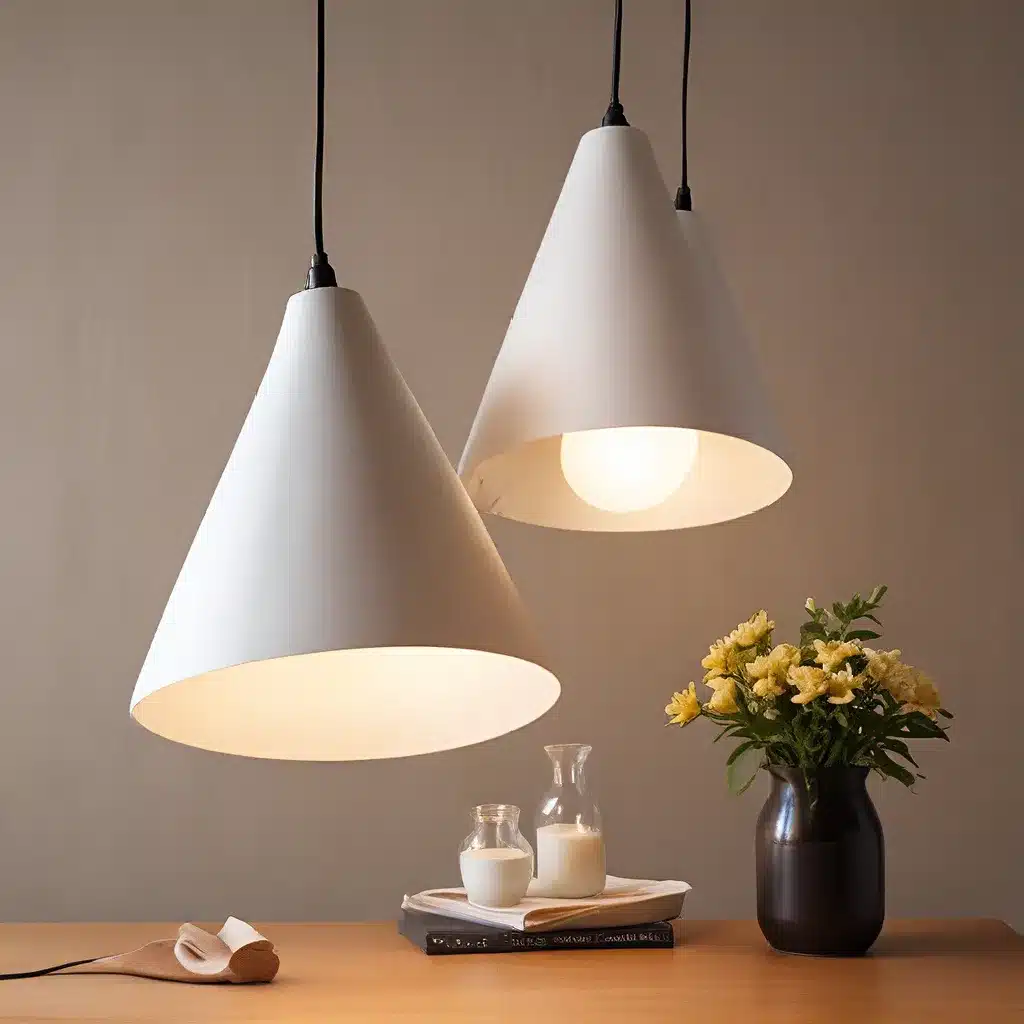
Lighting Luminance: DIY Fixtures to Brighten Any Room
Alright, folks, let’s talk about lighting – the unsung hero of interior design. Think about it, you could have the most meticulously decorated room, but if the lighting is off, it’s like trying to read a book in a pitch-black cave. No, thank you!
As a general contractor, I’ve seen my fair share of lighting debacles. From homeowners who think a single, measly floor lamp can illuminate a 500-square-foot living room to those who go overboard with flashy, luminescent fixtures that could outshine the Sun. It’s a delicate balance, my friends, and today, I’m here to help you strike it.
Illuminating the Essentials
Let’s start with the basics. Lighting, at its core, is all about creating the right ambiance and highlighting the key features of a room. Think of it as the invisible stage director, setting the mood and drawing the audience’s attention to the right places.
Now, I know what you’re thinking – “But I’m not a professional designer! How am I supposed to know what the ‘right’ lighting is?” Well, fear not, my lighting-challenged friends, for I’m about to share some trade secrets.
The first step is to identify the main purpose of the room. Is it a cozy, intimate space like a living room or bedroom? Or is it a more functional area, like a kitchen or home office? Once you’ve got that figured out, you can start thinking about the different types of lighting you’ll need.
Task lighting, for example, is perfect for areas where you need a focused, bright beam, like over a desk or in the kitchen. Ambient lighting, on the other hand, is all about creating a warm, inviting glow throughout the room, using floor lamps, wall sconces, or even strategically placed recessed lights.
And let’s not forget about accent lighting – the real showstoppers that highlight specific features, like a piece of artwork or a beautiful architectural detail. These are the lighting equivalent of a spotlight, drawing the eye to the things you want to showcase.
DIY Delights: Crafting Your Own Fixtures
Now, I know what you’re thinking – “Lighting sounds complicated. I’m just going to stick with a few generic lamps and call it a day.” But hold on, my friends, because I’ve got some DIY tricks up my sleeve that are going to change the game.
Sure, you could go the store-bought route, but where’s the fun in that? Plus, have you seen the prices on some of those fancy light fixtures these days? It’s enough to make your wallet weep.
Instead, why not tap into your inner Bob Vila and create your own custom lighting solutions? It’s easier than you might think, and the end result will be a unique, personalized touch that’ll have your friends and family ooh-ing and ahh-ing.
One of my favorite DIY projects is the Mason Jar Pendant Light. All you need is a mason jar, a light socket, and a bit of elbow grease. Simply drill a hole in the lid, thread the socket through, and voila – instant farmhouse chic. And the best part? You can customize the look by using different sized jars, colored glass, or even adding decorative elements like twine or beads.
Another fun option is the Copper Pipe Sconce. These bad boys are not only super-stylish, but they’re also incredibly versatile. You can use them as task lighting over a desk or as accent pieces to highlight a favorite painting or plant. Plus, the industrial-chic vibe is perfect for those of you with a more modern aesthetic.
And if you’re looking for a truly powerful, no-fuss lighting solution, may I suggest the trusty floor lamp? These babies are the perfect way to brighten up a bedroom or living room without any complicated wiring or installation. Just plug and play, my friends.
Luminous Levels: Mastering Brightness
Alright, now that we’ve covered the different types of lighting and some DIY options, let’s talk about one of the most important factors: brightness.
You see, lighting isn’t just about having the right fixtures – it’s also about finding the perfect balance of luminance. Too dim, and you’re left squinting and straining your eyes. Too bright, and you might as well be staring into the sun (ouch!).
So, how do you find that sweet spot? Well, it all comes down to understanding lumens – the measurement of a light source’s brightness. A typical 60-watt incandescent bulb, for example, puts out around 800 lumens. But don’t be fooled by the wattage – LED and CFL bulbs can pack a serious punch with far fewer watts.
When it comes to choosing the right lumens for your space, here’s a quick rule of thumb:
- Small rooms (100-150 sq ft): 800-1,200 lumens
- Medium rooms (150-250 sq ft): 1,500-3,000 lumens
- Large rooms (250+ sq ft): 3,000-6,000 lumens
Of course, these are just general guidelines, and your specific needs may vary depending on factors like ceiling height, wall color, and the overall aesthetic you’re going for. But it’s a good starting point to help you avoid those dreaded “too bright” or “too dim” scenarios.
Illuminating Your Abode: Putting It All Together
Alright, now that we’ve covered the basics of lighting, it’s time to put it all together and transform your home into a luminous oasis.
Let’s start with the living room, shall we? This is the heart of the home, the place where we gather to relax, entertain, and (let’s be honest) binge-watch our favorite shows. So, we’ll want to create a warm, inviting atmosphere with a mix of task, ambient, and accent lighting.
Task Lighting: A pair of floor lamps flanking the sofa or armchairs will provide the focused illumination you need for reading or playing board games.
Ambient Lighting: Recessed lights or a central pendant fixture will bathe the room in a soft, even glow, creating that cozy, welcoming vibe.
Accent Lighting: Wall sconces or track lighting can be used to highlight your favorite pieces of art or architectural details, adding depth and visual interest to the space.
Now, let’s move on to the bedroom. Here, the goal is to create a soothing, restful environment that’s conducive to a good night’s sleep.
Task Lighting: Bedside lamps or wall-mounted reading lights will give you the illumination you need for late-night page-turning.
Ambient Lighting: A dimmer-controlled ceiling light or a cozy floor lamp in the corner will provide a gentle, calming glow.
Accent Lighting: Subtle uplighting or a decorative table lamp on your dresser can add a touch of elegance and sophistication to the space.
And let’s not forget the kitchen – the workhorse of the home, where task lighting reigns supreme.
Task Lighting: Pendant lights over the island or countertops will ensure you can clearly see what you’re chopping, mixing, or baking.
Ambient Lighting: Recessed lights or a central chandelier will help brighten the entire room, making it feel warm and inviting.
Accent Lighting: Under-cabinet lights or a decorative pendant over the sink can highlight specific areas and add depth to the space.
Remember, the key to creating a well-lit home is to strike the right balance between task, ambient, and accent lighting. It’s a delicate dance, to be sure, but with a little creativity and a lot of experimentation, you can transform your space into a true oasis of illumination.
So, what are you waiting for? Grab your DIY tools, start scouring those Pinterest boards, and let’s get to work on brightening up your home, one luminous fixture at a time. Reading General Contractor is here to guide you every step of the way!
Related posts:
No related posts.




